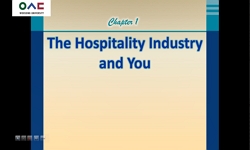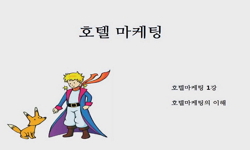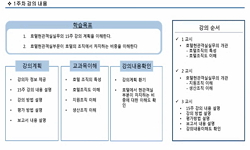우리나라 호텔 시장은 그간 외형적으로 괄목할만한 성장을 해왔으나 최근 들어 업체 간 직접경쟁이 심화되고 있다. 이에 본 연구는 국내 외식사업을 실시하고 있는 호텔에서 그 비중이 막대...
http://chineseinput.net/에서 pinyin(병음)방식으로 중국어를 변환할 수 있습니다.
변환된 중국어를 복사하여 사용하시면 됩니다.
- 中文 을 입력하시려면 zhongwen을 입력하시고 space를누르시면됩니다.
- 北京 을 입력하시려면 beijing을 입력하시고 space를 누르시면 됩니다.
https://www.riss.kr/link?id=T12166040
- 저자
-
발행사항
서울 : 경희대학교 대학원, 2010
- 학위논문사항
-
발행연도
2010
-
작성언어
한국어
- 주제어
-
DDC
647.9 판사항(22)
-
발행국(도시)
서울
-
기타서명
A study on management efficiency of restaurants at first class hotels by using DEA analysis
-
형태사항
vi, 157 p. : 26 cm
-
일반주기명
경희대학교 논문은 저작권에 의해 보호받습니다.
지도교수: 신홍철
참고문헌 : p. 142-153 - 소장기관
-
0
상세조회 -
0
다운로드
부가정보
국문 초록 (Abstract)
이에 본 연구는 국내 외식사업을 실시하고 있는 호텔에서 그 비중이 막대한 개별호텔들이 처해있는 경영적 현상을 정확히 파악하고, 이에 근거한 효율성 개선대안을 마련하고자 하였다. 이를 위해 개별호텔의 효율성 수준을 분석하고, 호텔간 효율성차이의 원인을 파악하였으며, 효율성에 미치는 요인들의 영향 정도를 분석하였다. 또한 개별호텔의 실제 효율치와 고객이 지각하는 만족도 수준과의 차이 등에 대해 비교연구 하였다.
본 연구는 방법론적으로 다수의 투입과 산출요소를 갖는 서비스 기업의 효율성 평가에 유용한 DEA 모형을 활용하여 효율성 평가를 실시하였다. DEA 효율성 평가에는 CCR 분석과 BCC 분석을 모두 진행하였다. 더 나아가 규모효율성과 참조집단 분석을 통해 비효율 호텔의 원인분석과 효율성 개선 목표치를 제시하였다. 아울러 초효율성기법을 통해 효율적인 DMU의 순위분석을 실시하였다. 그리고 DEA 효율성 평가 결과치를 활용하여 효율성에 미치는 변수의 영향 정도를 파악하기 위해 Tobit 분석을 실시하였다. 호텔 입지특성별 집단 간 효율성 차이 분석을 추가로 진행하였고, 소비자 만족도 조사를 실시하여 DEA 효율성 평가결과와 비교분석 하였다. 이를 통해 호텔의 내  외부적인 요인을 종합한 구체적이고 현실적인 효율성 개선안을 제시하였다. 본 연구에서 수행한 호텔 개별호텔의 효율성 평가결과를 요약하면 다음과 같다.
첫째, DEA 효율성 평가결과, 분석대상 호텔들은 인구수, 가구소득 등과 같은 상권특성을 포함할 때가 외부요인을 포함하지 않을 때 보다 기술효율성과 순수기술효율성이 모두 높게 나타났다. 상권규모를 감안할 경우 A사의 분석대상 호텔들은 대체적으로 투자가 효율적으로 이루어졌음을 알 수 있었다.
더욱이 5개 호텔의 PTE와 SE의 평균값을 비교해 보면 모형1에서는 SE가 더 높은 것으로 나타났으나, 모형2에서는 PTE가 더 높았다. 모형2에서 비효율적인 호텔의 경우 <1의 규모수익체증 상태로 나타났는데, 이는 상권변수를 감안할 경우 분석대상 호텔들이 규모면에서는 오히려 일부 호텔이 과소투자 상태임을 의미한다. 이러한 결과는 규모효율성 분석결과와도 일치했다. 규모효율성 분석결과 모형1은 기술적 요인에 의한 비효율 호텔이 전체 비효율 호텔수의 79.3%에 해당한다. 이에 반해, 모형2에서는 규모의 문제로 인한 비효율 호텔수가 전체 비효율 호텔의 66.7%에 달하는 것으로 나타났다. 그리고 참조집단 분석결과 일부호텔을 제외하고는 대체적으로 모형1보다 모형2의 투입 및 산출요소의 개선치가 줄어드는 것으로 나타났다.
이러한 규모효율성 분석과 참조집단 분석결과를 종합해보면, A사의 분석대상 호텔 중 비효율 호텔의 효율성 개선을 위해서는 투입요소를 증가시키는 전략이 바람직하다. 그러나 호텔의 사정으로 이것이 여의치 않을 경우에는 투입요소를 유지한 상태에서 산출물을 극대화 하는 전략이 필요하다 하겠다.
둘째, DEA 효율치를 활용한 DEA 사후 분석에서 Tobit 모형 분석결과는 각 변수별로 효율성에 미치는 영향의 크기와 정(+) 또는 부(-)와 같이 영향이 미치는 방향에 대한 정보를 제공하였다. 8개의 투입,산출변수 중 매출액과, 고객수는 정(+)의 영향이 대체적으로 컸고, 연면적은 효율성에 부정적인 영향을 미쳤으며 그 영향의 크기 또한 상당한 것으로 나타났다. 종업원수의 경우에는 통계적 유의성은 있으나 영향의 정도가 미미하였다.
따라서 비효율호텔의 효율성 제고를 위해서는 매출액과 고객수의 확대와 같은 산출물을 늘이는 전략이 우선적으로 필요하며, 다른 한편으로 초기의 호텔 기획 시에 매장면적과 주차장, 그리고 전체규모 등의 합리적 공간계획이 매우 중요하다는 것을 알 수 있다.
셋째, 소비자 만족도 조사결과는 DEA 효율성 측정결과와는 상당히 다르게 나타났다. DEA 평가에서는 효율적인 호텔의 집단이 비효율적인 호텔의 집단보다 만족도가 매우 낮게 나타났고 대부분의 경우 DEA 평가 순위와 만족도 평가 결과가 반대 성향을 보였다. 이와 같이 DEA 평가와 만족도 평가를 병행함으로써 DEA 평가에서는 효율적인 호텔일지라도 소비자가 갖는 불만족을 사전에 파악할 수 있었다.
분석대상 5개 호텔에 대해 DEA 효율치와 소비자 만족도 조사점수를 통합 분석한 결과 효율성과 만족도 점수가 모두 낮아 시급한 개선이 필요한 호텔이 4개, 효율성은 높으나 만족도가 낮아 장래적 위험이 큰 호텔이 6개, 효율성과 만족도가 모두 높은 이상적인 호텔이 3개, 만족도는 높지만 효율성이 낮아 개선 여지가 큰 호텔이 3개로 나타났다.
이와 같이 DEA 효율성 평가결과와 만족도 점수를 활용한 통합분석은 현재 상태의 성과정보를 정확히 제시함으로써 호텔별로 중점관리요인에 대한 전략 수립이 가능하게 하였다. 따라서 호텔 자체의 경쟁력보다는 독점적 입지에 의해 효율성이 유지되고 있는 호텔들은 소비자 만족도 조사결과를 활용하여 만족도 요인별로 낮은 요인에 대해 중점관리를 하여야 한다. 특히, 고객편의시설 확충과 직원 서비스 교육 강화 등을 통해 향후 경쟁점 출현 시 발생할 수 있는 위험에 사전에 대처하여야 할 것이다.
이상의 연구결과는 앞서 연구의 목적달성을 위해 필요한 세 가지 논점에 대한 분석결과를 제시하였다. 즉, 본 연구를 통해 호텔의 효율성 분석을 하였고, 효율성과 비효율성 원인을 파악하였으며, 각 투입 산출요소가 효율성에 미치는 영향의 정도를 확인하였다. 계량적인 효율성 평가 값과 소비자가 느끼는 만족도 차이를 비교하였고, 이러한 통합적인 분석에 의거하여 최종적으로 비효율 호텔에 대해 효율성 개선방안을 제시하였다.
우리나라 호텔 시장은 그간 외형적으로 괄목할만한 성장을 해왔으나 최근 들어 업체 간 직접경쟁이 심화되고 있다.
이에 본 연구는 국내 외식사업을 실시하고 있는 호텔에서 그 비중이 막대한 개별호텔들이 처해있는 경영적 현상을 정확히 파악하고, 이에 근거한 효율성 개선대안을 마련하고자 하였다. 이를 위해 개별호텔의 효율성 수준을 분석하고, 호텔간 효율성차이의 원인을 파악하였으며, 효율성에 미치는 요인들의 영향 정도를 분석하였다. 또한 개별호텔의 실제 효율치와 고객이 지각하는 만족도 수준과의 차이 등에 대해 비교연구 하였다.
본 연구는 방법론적으로 다수의 투입과 산출요소를 갖는 서비스 기업의 효율성 평가에 유용한 DEA 모형을 활용하여 효율성 평가를 실시하였다. DEA 효율성 평가에는 CCR 분석과 BCC 분석을 모두 진행하였다. 더 나아가 규모효율성과 참조집단 분석을 통해 비효율 호텔의 원인분석과 효율성 개선 목표치를 제시하였다. 아울러 초효율성기법을 통해 효율적인 DMU의 순위분석을 실시하였다. 그리고 DEA 효율성 평가 결과치를 활용하여 효율성에 미치는 변수의 영향 정도를 파악하기 위해 Tobit 분석을 실시하였다. 호텔 입지특성별 집단 간 효율성 차이 분석을 추가로 진행하였고, 소비자 만족도 조사를 실시하여 DEA 효율성 평가결과와 비교분석 하였다. 이를 통해 호텔의 내  외부적인 요인을 종합한 구체적이고 현실적인 효율성 개선안을 제시하였다. 본 연구에서 수행한 호텔 개별호텔의 효율성 평가결과를 요약하면 다음과 같다.
첫째, DEA 효율성 평가결과, 분석대상 호텔들은 인구수, 가구소득 등과 같은 상권특성을 포함할 때가 외부요인을 포함하지 않을 때 보다 기술효율성과 순수기술효율성이 모두 높게 나타났다. 상권규모를 감안할 경우 A사의 분석대상 호텔들은 대체적으로 투자가 효율적으로 이루어졌음을 알 수 있었다.
더욱이 5개 호텔의 PTE와 SE의 평균값을 비교해 보면 모형1에서는 SE가 더 높은 것으로 나타났으나, 모형2에서는 PTE가 더 높았다. 모형2에서 비효율적인 호텔의 경우 <1의 규모수익체증 상태로 나타났는데, 이는 상권변수를 감안할 경우 분석대상 호텔들이 규모면에서는 오히려 일부 호텔이 과소투자 상태임을 의미한다. 이러한 결과는 규모효율성 분석결과와도 일치했다. 규모효율성 분석결과 모형1은 기술적 요인에 의한 비효율 호텔이 전체 비효율 호텔수의 79.3%에 해당한다. 이에 반해, 모형2에서는 규모의 문제로 인한 비효율 호텔수가 전체 비효율 호텔의 66.7%에 달하는 것으로 나타났다. 그리고 참조집단 분석결과 일부호텔을 제외하고는 대체적으로 모형1보다 모형2의 투입 및 산출요소의 개선치가 줄어드는 것으로 나타났다.
이러한 규모효율성 분석과 참조집단 분석결과를 종합해보면, A사의 분석대상 호텔 중 비효율 호텔의 효율성 개선을 위해서는 투입요소를 증가시키는 전략이 바람직하다. 그러나 호텔의 사정으로 이것이 여의치 않을 경우에는 투입요소를 유지한 상태에서 산출물을 극대화 하는 전략이 필요하다 하겠다.
둘째, DEA 효율치를 활용한 DEA 사후 분석에서 Tobit 모형 분석결과는 각 변수별로 효율성에 미치는 영향의 크기와 정(+) 또는 부(-)와 같이 영향이 미치는 방향에 대한 정보를 제공하였다. 8개의 투입,산출변수 중 매출액과, 고객수는 정(+)의 영향이 대체적으로 컸고, 연면적은 효율성에 부정적인 영향을 미쳤으며 그 영향의 크기 또한 상당한 것으로 나타났다. 종업원수의 경우에는 통계적 유의성은 있으나 영향의 정도가 미미하였다.
따라서 비효율호텔의 효율성 제고를 위해서는 매출액과 고객수의 확대와 같은 산출물을 늘이는 전략이 우선적으로 필요하며, 다른 한편으로 초기의 호텔 기획 시에 매장면적과 주차장, 그리고 전체규모 등의 합리적 공간계획이 매우 중요하다는 것을 알 수 있다.
셋째, 소비자 만족도 조사결과는 DEA 효율성 측정결과와는 상당히 다르게 나타났다. DEA 평가에서는 효율적인 호텔의 집단이 비효율적인 호텔의 집단보다 만족도가 매우 낮게 나타났고 대부분의 경우 DEA 평가 순위와 만족도 평가 결과가 반대 성향을 보였다. 이와 같이 DEA 평가와 만족도 평가를 병행함으로써 DEA 평가에서는 효율적인 호텔일지라도 소비자가 갖는 불만족을 사전에 파악할 수 있었다.
분석대상 5개 호텔에 대해 DEA 효율치와 소비자 만족도 조사점수를 통합 분석한 결과 효율성과 만족도 점수가 모두 낮아 시급한 개선이 필요한 호텔이 4개, 효율성은 높으나 만족도가 낮아 장래적 위험이 큰 호텔이 6개, 효율성과 만족도가 모두 높은 이상적인 호텔이 3개, 만족도는 높지만 효율성이 낮아 개선 여지가 큰 호텔이 3개로 나타났다.
이와 같이 DEA 효율성 평가결과와 만족도 점수를 활용한 통합분석은 현재 상태의 성과정보를 정확히 제시함으로써 호텔별로 중점관리요인에 대한 전략 수립이 가능하게 하였다. 따라서 호텔 자체의 경쟁력보다는 독점적 입지에 의해 효율성이 유지되고 있는 호텔들은 소비자 만족도 조사결과를 활용하여 만족도 요인별로 낮은 요인에 대해 중점관리를 하여야 한다. 특히, 고객편의시설 확충과 직원 서비스 교육 강화 등을 통해 향후 경쟁점 출현 시 발생할 수 있는 위험에 사전에 대처하여야 할 것이다.
이상의 연구결과는 앞서 연구의 목적달성을 위해 필요한 세 가지 논점에 대한 분석결과를 제시하였다. 즉, 본 연구를 통해 호텔의 효율성 분석을 하였고, 효율성과 비효율성 원인을 파악하였으며, 각 투입 산출요소가 효율성에 미치는 영향의 정도를 확인하였다. 계량적인 효율성 평가 값과 소비자가 느끼는 만족도 차이를 비교하였고, 이러한 통합적인 분석에 의거하여 최종적으로 비효율 호텔에 대해 효율성 개선방안을 제시하였다.
다국어 초록 (Multilingual Abstract)
In terms of methodology, an efficiency evaluation is performed by using DEA mo이 which is specially useful for evaluating an efficiency of a service business sector as it has multiple input and output factors. CCR analysis and BCC analysis are performed together in the evaluation of DEA efficiency.eff addition to this, the cause analysis of non-efficient hotels and expected improvement ameral figure is suggested by the analyses of size-efficiency and reference groef.used an efficient ranking analysis of DMU is executed by using of super-efficiency method DEo estimate the extent of effect on efficiency by ute izing DEA efficiency evaluation result,DEobit analysis is executed DEA eefficiency difference between groefs according to hotel locations is analyzed additionally, DEA efficiency evaluation and comparative analysis are made through consumer satisfaction survey.
By the above analyses, a detailed and realistic efficiency improvement measure is suggested. The conclusions of this study are as follows.
First, through DEA efficiency evaluation, the target hotels show both high techno-efficiency and pure techno-efficiency when they consider characters of business area such as population and family income, other than not. When considering the size of business area, the target hotels of A company show a high efficient level in investment in general. When average value of PTE and SE in five hotels is compared, SE is higher in model 1, but PTE is higher in model 2. In model 2, in case of non-efficient hotel, size-income indigestion of <1 appears, which indicates that some target hotels are under invested against the business area variables. This result corresponds to the size-efficiency analysis. By size-efficiency analysis, in model 1, non-efficient hotels due to technical factors occupy 79.3% of all non-efficient hotels. On the other hand, in model 2 non-efficient hotels due to a size factor occupy 66.7% of all non-efficient hotels. It is shown that except for some hotels, the improvement of output in model 1 is generally lower than in model 2.
Based on these analyses, it is recommended to increase input factors to improve efficiency of non-efficiency hotels of A company. If not possible, a strategy to maximize the output while keeping the input factors equal is required.
Second, Tobit model analysis in DEA pot analysis using DEA efficiency level indicates the influence amount upon efficiency by variables, and gives information on the direction of effect being made either positive(+) or negative(-). Out of 8 inputoutput variables, sales amount and the number of customer takes a positive(+) effect, and total size takes a negative effect and the degree of influence is also not significant. Even though there is a statistical significance, the extent of influence is not that high.
Accordingly, a strategy to increase outputs such as sales amount and number of customer is required to improve efficiency of non-efficient hotels. On the other hand, reasonable space plan from its initial stage of the construction including sales shop size, parking space, total size etc. is essential.
Third, the result of consumer satisfaction shows a considerable difference to DEA efficiency evaluation. In the DEA evaluation, the satisfaction level of efficient hotels group is far lower than that of non-efficient hotels, and majority cases bring out opposite results in between DEA evaluation and satisfaction evaluation. As such, the consumers' complaint can be grasped in advance as DEA evaluation and satisfaction evaluation are made together.
The comprehensive analysis of DEA efficiency level and consumer satisfaction level to the five target hotels show that 4 hotels are under imminent improvement with low efficiency and satisfaction level, 6 hotels are have efficiency, but also have high future risk, 3 hotels are ideal with both high efficiency and satisfaction, and 3 hotels are required to improve their efficiency in spite of their high satisfaction level.
To comprehensive analysis makes it possible to set up a effective strategy for main managing factors by suggesting an accurate appraisal information by hotels. Thus, hotels run not by their competitiveness but by locational monopoly should deal with the satisfaction level paying attention to low factors by using of the consumer satisfaction survey. In particular, an extension of customer convenient facility and strengthen service staff training can be of helpful to deviate a future potential hazard.
The above results suggest the three perspectives in order to achieve the study aim. That is to say, this study does efficiency analysis of hotels, finds out factors of efficiency and non-efficiency, and the extend of influence of inputoutput factors upon efficiency is studied. The difference between quantitative efficiency evaluation value and consumer satisfaction level is compared, then followed by a suggestion of effective improvement measure.
The hotel market in Korea has grown considerably in size, but recently competition between hotels becomes more and more severe. This study aims at understanding managemental status of individual hotels that run restaurants, and at suggesting an effici...
The hotel market in Korea has grown considerably in size, but recently competition between hotels becomes more and more severe. This study aims at understanding managemental status of individual hotels that run restaurants, and at suggesting an efficient improvement alternative. For this purpose, the efficiency level in each hotel is analyzed, the cause of efficiency difference between hotels is analyzed, and finally how the efficiency takes effect on the hotel management is analyzed. Also, a comparative study between the actual efficiency level of each hotel and satisfactory level of customers is made.
In terms of methodology, an efficiency evaluation is performed by using DEA mo이 which is specially useful for evaluating an efficiency of a service business sector as it has multiple input and output factors. CCR analysis and BCC analysis are performed together in the evaluation of DEA efficiency.eff addition to this, the cause analysis of non-efficient hotels and expected improvement ameral figure is suggested by the analyses of size-efficiency and reference groef.used an efficient ranking analysis of DMU is executed by using of super-efficiency method DEo estimate the extent of effect on efficiency by ute izing DEA efficiency evaluation result,DEobit analysis is executed DEA eefficiency difference between groefs according to hotel locations is analyzed additionally, DEA efficiency evaluation and comparative analysis are made through consumer satisfaction survey.
By the above analyses, a detailed and realistic efficiency improvement measure is suggested. The conclusions of this study are as follows.
First, through DEA efficiency evaluation, the target hotels show both high techno-efficiency and pure techno-efficiency when they consider characters of business area such as population and family income, other than not. When considering the size of business area, the target hotels of A company show a high efficient level in investment in general. When average value of PTE and SE in five hotels is compared, SE is higher in model 1, but PTE is higher in model 2. In model 2, in case of non-efficient hotel, size-income indigestion of <1 appears, which indicates that some target hotels are under invested against the business area variables. This result corresponds to the size-efficiency analysis. By size-efficiency analysis, in model 1, non-efficient hotels due to technical factors occupy 79.3% of all non-efficient hotels. On the other hand, in model 2 non-efficient hotels due to a size factor occupy 66.7% of all non-efficient hotels. It is shown that except for some hotels, the improvement of output in model 1 is generally lower than in model 2.
Based on these analyses, it is recommended to increase input factors to improve efficiency of non-efficiency hotels of A company. If not possible, a strategy to maximize the output while keeping the input factors equal is required.
Second, Tobit model analysis in DEA pot analysis using DEA efficiency level indicates the influence amount upon efficiency by variables, and gives information on the direction of effect being made either positive(+) or negative(-). Out of 8 inputoutput variables, sales amount and the number of customer takes a positive(+) effect, and total size takes a negative effect and the degree of influence is also not significant. Even though there is a statistical significance, the extent of influence is not that high.
Accordingly, a strategy to increase outputs such as sales amount and number of customer is required to improve efficiency of non-efficient hotels. On the other hand, reasonable space plan from its initial stage of the construction including sales shop size, parking space, total size etc. is essential.
Third, the result of consumer satisfaction shows a considerable difference to DEA efficiency evaluation. In the DEA evaluation, the satisfaction level of efficient hotels group is far lower than that of non-efficient hotels, and majority cases bring out opposite results in between DEA evaluation and satisfaction evaluation. As such, the consumers' complaint can be grasped in advance as DEA evaluation and satisfaction evaluation are made together.
The comprehensive analysis of DEA efficiency level and consumer satisfaction level to the five target hotels show that 4 hotels are under imminent improvement with low efficiency and satisfaction level, 6 hotels are have efficiency, but also have high future risk, 3 hotels are ideal with both high efficiency and satisfaction, and 3 hotels are required to improve their efficiency in spite of their high satisfaction level.
To comprehensive analysis makes it possible to set up a effective strategy for main managing factors by suggesting an accurate appraisal information by hotels. Thus, hotels run not by their competitiveness but by locational monopoly should deal with the satisfaction level paying attention to low factors by using of the consumer satisfaction survey. In particular, an extension of customer convenient facility and strengthen service staff training can be of helpful to deviate a future potential hazard.
The above results suggest the three perspectives in order to achieve the study aim. That is to say, this study does efficiency analysis of hotels, finds out factors of efficiency and non-efficiency, and the extend of influence of inputoutput factors upon efficiency is studied. The difference between quantitative efficiency evaluation value and consumer satisfaction level is compared, then followed by a suggestion of effective improvement measure.
목차 (Table of Contents)
- 제1장 서론 1
- 제1절 연구의 배경 1
- 제2절 문제 제기 4
- 제3절 연구의 목적 7
- 제4절 연구의 중요성 9
- 제1장 서론 1
- 제1절 연구의 배경 1
- 제2절 문제 제기 4
- 제3절 연구의 목적 7
- 제4절 연구의 중요성 9
- 제5절 용어정리 11
- 제6절 연구의 구성 13
- 제2장 문헌연구 15
- 제1절 호텔 레스토랑 15
- 제2절 경영 효율성 평가 22
- 제3절 DEA 효율성 평가 38
- 제4절 DEA 선행연구 67
- 제3장 연구방법 87
- 제1절 DEA모형의 선택 87
- 제2절 변수의 조작적 정의 및 변수의 선택 89
- 제3절 표본의 설계 및 분석방법 91
- 제4절 연구의 측정모형 및 연구과제 95
- 제4장 외식사업부를 운영하고 있는 호텔의 효율성 분석 98
- 제1절 DEA 효율성 평가 98
- 제2절 DEA 순위 분석 109
- 제3절 DEA 평가 사후 분석 111
- 제4절 소비자 만족도 조사 121
- 제5절 연구결과의 논의 127
- 제5장 결론 136
- 제1절 연구결과의 요약 136
- 제2절 연구의 한계점 139
- 참고문헌 142












